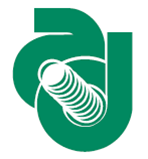Speaker
Dr
Anand Dubey
(VECC, Kolkata)
Description
A large area, high granularity and high rate gas detector has been proposed for the detection of muons in the Compressed Baryonic Experiment (CBM) in the upcoming FAIR facility in Germany. The main task of the Muon Chambers (MUCH) is to detect dimuon signals arising from the decay of the low mass vector mesons and those from the decay of charmonia produced in the heavy ion collisions at FAIR. The main challenges for MUCH includes a high event rate of $~10$ MHz and high radiation environment, besides others. The MUCH system consists of alternating layers of absorbers and tracking chambers. We at VECC, Kolkata, are involved in the design and development of GEM based detector for the first few planes of MUCH where the particle density is about 1 MHz/cm$^2$. Several triple GEM prototypes with 2D pad readout were built at VECC and tested both with radioactive sources and proton and pion beams. The chambers having realistic pad granularities were tested using a self triggered electronics, collecting data in a free streaming mode, as the case would be in the actual experiment. Events are then reconstructed offline by associating the hits with the trigger on the basis of their time-stamps. A charged particle detection efficiency greater than 90$\%$ was achieved from these tests. Design and assembly of large size GEM chambers based on sector layout is underway. Details on the chamber design, fabrication and optimization of the operating conditions would be presented and discussed.
Author
Dr
Anand Dubey
(VECC, Kolkata)

